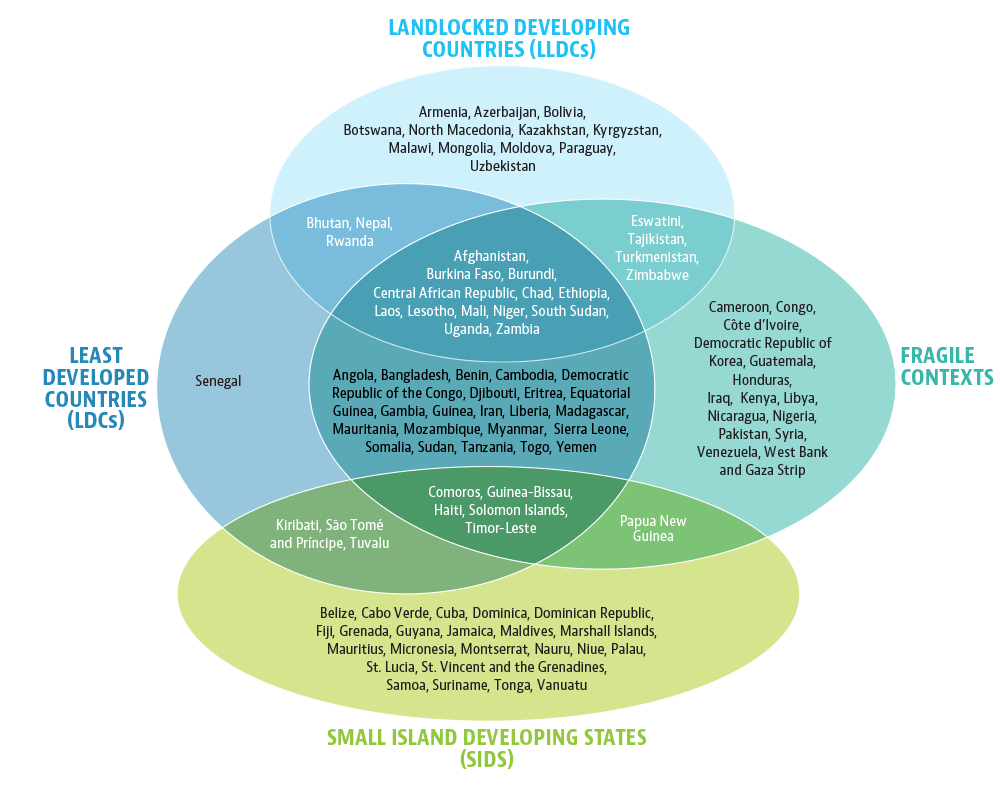|
This category is a grouping of 32 developing countries facing particular challenges related to their lack of direct access to the sea, which leads to geographical isolation from international markets.
Import and export of goods and services need to transit through other countries, generating high trade costs and major logistical and infrastructure challenges. Currently, high transport costs erode the competitiveness of Landlocked Developing Countries. They spend almost twice as much of their export earnings on transport and insurance services than the average for developing countries.
In 2003, a programme of action was adopted by the United Nations General Assembly at the United Nations Global Conference in Kazakhstan, focusing on transport infrastructure and maintenance, transit policies and trade facilitation measures.
Key findings
- Over the period 2014-21, ODF commitments to LLDCs have shown a rate of growth of +3.4% on average per year.
- The largest providers of ODF commitments to LLDCs are, in decreasing order, the International Development Association (IDA), the United States and the Asian Development Bank (representing respectively 17%, 16% and 8% of total ODF to LLDCs in 2014-21).
- Total external flows to LLDCs show a slight increasing trend over the period 2013-20; also, its composition has been changing as follows: remittances held a prominent role in 2013 (representing 38% of the total external mix, followed by ODF with 34% and FDIs with 28%). In 2020 it was ODF who led LLDCs’ external mix with 45%, followed by remittances with 35% and finally FDIs with 20%.
- Guarantees, direct investments and syndicated loans where the leveraging mechanisms privileged to mobilise private flows to LLDCs in 2014-21 (representing 35%, 29% and 17% respectively, over the total amount mobilised in the period, that is USD 24.8 billion).
|
See also :
Data on LLDCs
|
